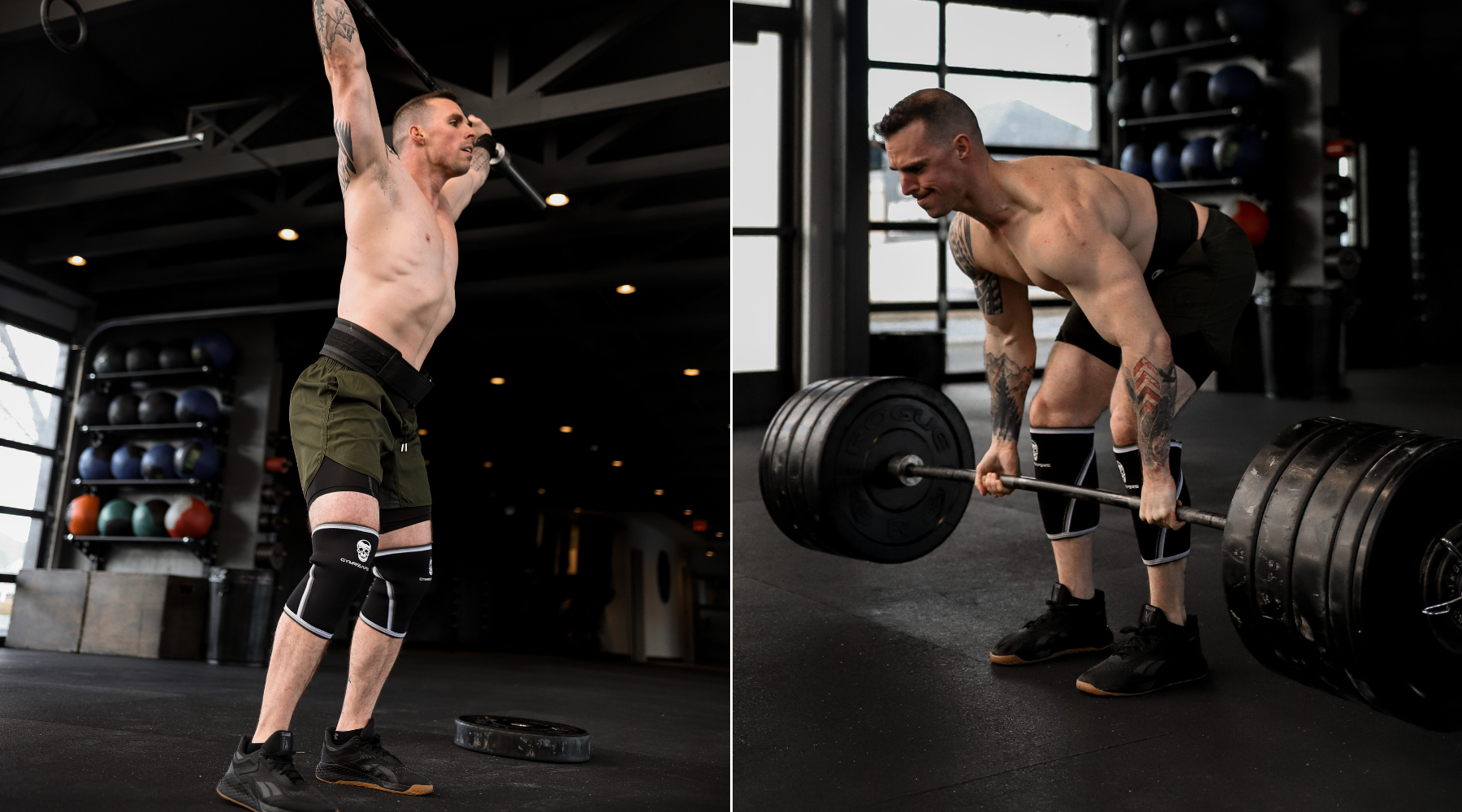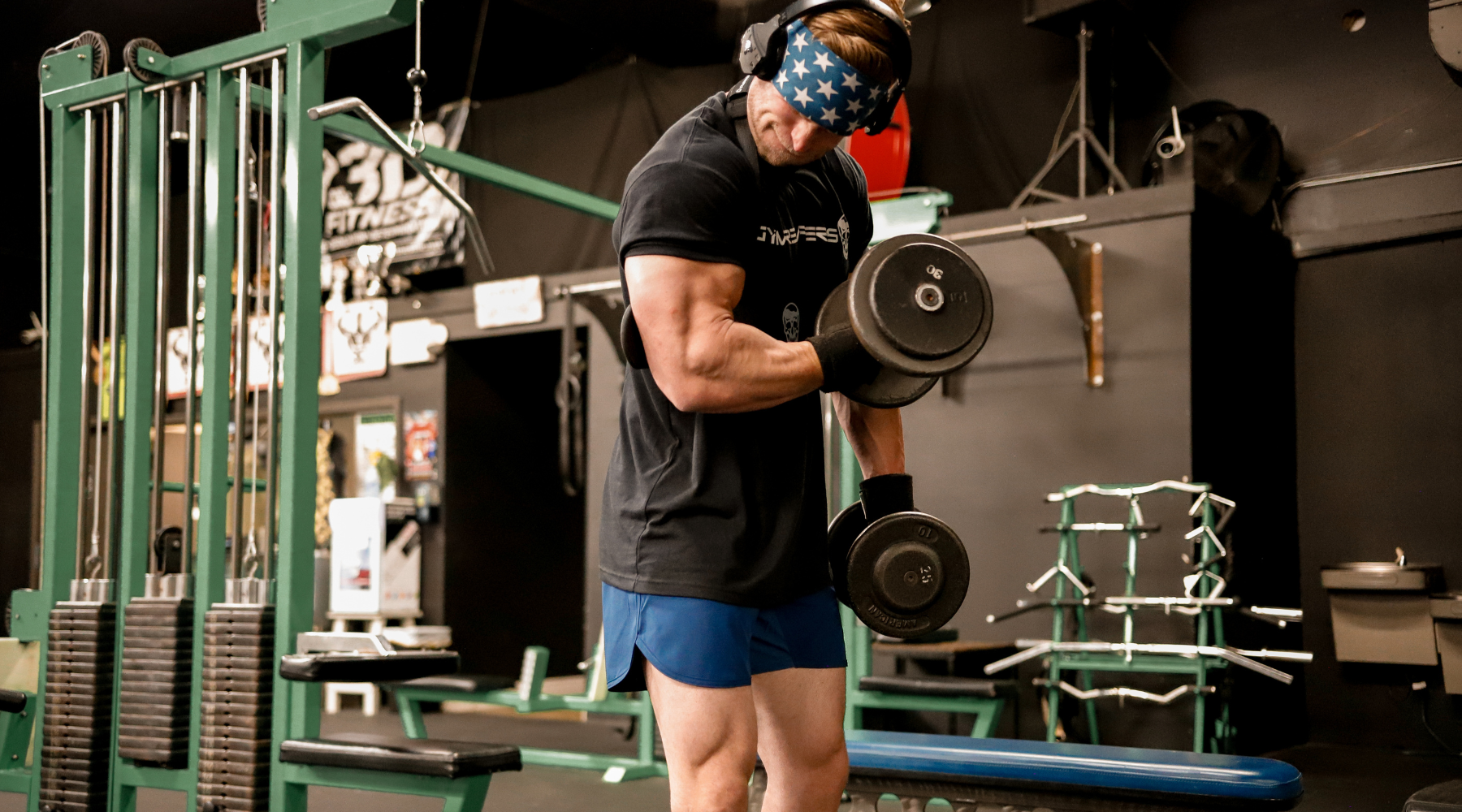Many lifters wonder if wrist wraps can improve their performance in the gym. As a powerlifting coach, I recommend that all my athletes invest in a pair of wrist wraps.
Wrist wraps can significantly enhance your lifting capacity in any movement that puts pressure on the wrist joint. For instance, low bar squats and bench presses are particularly demanding on this joint, making wrist wraps a valuable tool for those aiming to lift heavier.
However, not every lifter may require wrist wraps to improve their performance. Below, I’ll share my recommendations for effectively using wrist wraps during your workouts.
Key Takeaways
3 Reasons Why Wrist Wraps Enhance Your Lifting Performance
1. They Help You Maintain a Neutral Wrist Position
The wrist wraps prevent your wrist from bending forward or back and cast your wrist in place. When it comes to exercises like squats, bench presses, and overhead presses a neutral wrist is essential for being efficient and generating power.
When the bar rests over the base of your palm, wrist wraps can help you maintain this alignment. Without them, the bar may roll backward, forcing your forearm extensor muscles to work harder to stabilize your grip. By securing your wrist, wrist wraps minimize this risk, allowing you to focus on lifting.
Pro tip: Ensure the entire wrist joint is covered when applying the wraps for maximum support.
2. They Reduce the Risk of Wrist Injury
Beyond improving lifting efficiency, wrist wraps are instrumental in preventing injuries. Studies (Burkhart & Andrews, 2010) show that they can help protect the wrist and elbow joints by restricting excessive movement.
“In sports in general, wrist wraps protect the athlete from elbow and wrist injuries by restricting forced or voluntary backward and sideways wrist movement.”
The wrist joint is not built well to handle very high degrees of demand placed on the small joint by heavy weights, especially on squats. This is why we see basically every strength athlete wear wrist wraps.
The wrist wraps form around the wrist to create a cast-like structure to help support the joint for the high demands placed by these heavy weights.
This is important in the low bar squat because the neutral wrist position keeps the bar in place; the bar sliding down can cause you to lose position which could lead to a wrist injury and potentially lower back or other injuries as well.
- Related Article: Wrist Wraps Vs Lifting Straps: What Are the Differences?
3. Wrist Wraps Help You Maintain Performance Longer
Even if you are lifting lighter weights, wrist wraps will help you maintain proper wrist position longer in your workouts. Maybe you aren’t lifting enough weight where you feel your wrists are being pulled back all that much because you are new or focused on higher rep training.
In these cases, you might not notice huge performance benefits early in your workout. However, as the workout goes on your forearm extensors may start to fatigue and this could lead to a decline in performance.If your goals are more general health-related the best solution to this is doing more forearm muscle strengthening.
However, those that have serious hypertrophy goals like competitive bodybuilders and powerlifters may be better off wearing wrist wraps to allow for more focus on their target muscle groups for a movement like bench press or overhead press.
- Related Article: How to Choose a Lifting Belt for Big Guys (Plus, 3 Picks)
How Much More Can You Expect To Lift With Wrist Wraps?
The amount of additional weight that wrist wraps can help you lift is unknown and dependent on the person and movement. Studies have not been conducted to allow us to conclude the exact amount of weight increase expected from wearing wrist wraps; however, everyone that wears them agrees that they help you lift more.
On movements like low bar squats and bench presses, where the wrist joint can be such a limiting factor, you can expect to see the biggest increase especially as you get more advanced and the wrists become a limiting factor.
The demand for a 300lb+ bench and 500lb+ squat is likely too much for many lifters to be able to perform without wrist wraps. Anecdotally I have noticed my lifters can expect to see about a 2-10% increase in their lift depending on the lift and the lifter of course.
This can really depend on the way a lifter lifts however because of loss of form the likelihood of a lift being missed without wraps is increased. Even lifters who maybe don't rely heavily on the use of wrist wraps will miss lifts at their top end more often.
When performing a max effort attempt a little loss of form could lead to a missed lift. Maintaining your form better is the biggest way wrist wraps let you lift more. You may not see as much increase in other movements, like a kettlebell front squat, but may still feel a large degree of increased comfort while performing the movement.
- Related Article: Can You Wash Wrist Wraps? Yes, Here's How to Properly Do It
What Exercises Benefit Most from Wrist Wraps?
Any exercise that puts a lot of load on the wrists like low bar squats and bench press can be expected to see the most help from wrist wraps. Other exercises could be things like kettlebell cleans or front squats, push-ups, overhead presses, and more.
Low Bar Squats
The low bar squat is an exercise where you put the bar on the back of your traps and on top of your delts to get a better position to squat more weight. This position also places a lot more demand on the wrist compared to the high bar squat.
In the high bar squat, the bar will rest on top of your traps; however, in the low bar position, your wrists prevent the bar from rolling down your back. This can cause pain and stress on the wrist joint, especially for lifters with 300 lb and above squats.
Wearing wrist wraps provides the needed support to help your wrists handle the high demand of the low bar position.
Bench Press
In a bench press, the weight will sit directly over the wrist joint leading to a high demand on this joint; wrist wraps will provide the necessary support for success in the movement. Most lifters will try to keep their wrist neutral while others will allow for more wrist extension to decrease the range of motion in the movement.
In both cases, wrist wraps will provide pivotal support in maintaining the wrist position you feel strongest in for bench press.
Overhead Press
The overhead press is very similar to the bench press in how wrist wraps benefit the movement. The major difference is that most people tend not to overhead press as much as they are bench pressing so wrist wraps may be less beneficial for performance.
Strongmen who do a ton of overhead pressing and compete in a lot of overhead pressing events will want wrist wraps to help with the very high demand for overhead pressing. Overhead pressing movements will be less stable than the bench press. This can lead to more risk if the bar (or dumbbell) rolls back in your hand which could lead to a higher risk of injury without wrist wraps.
Kettlebell Cleans and Front Squats

Many who enjoy functional training and CrossFit will regularly perform kettlebell cleans and front squats which place a high demand on the wrist joint. Both movements involve a high degree of wrist extension, especially cleans where the kettlebell's momentum will be forcing the wrist back.
Many may be using these movements as a form of wrist and forearm strengthening so may choose to avoid using wrist wraps. However, going heavy on these movements for CrossFit Competitions or workouts can see reduced injury risk for these movements.
- Related Article: Should You Wear Wrist Wraps for Curls? And, Do They Help?
Best Wraps For Increased Wrist Support
Best Wraps For Most Lifters - 18-Inch Wrist Wraps
The 18-inch wrist wraps are flexible and great for wrapping your wrists as tightly as needed to help improve grip strength for deadlifts. They are approved for powerlifting meets in every federation.
Thick Wraps For Heavy Lifts - Stiff Wrist Wraps
The heavy duty wrist supports provide the needed for support for very heavy squats or bench presses.
Frequently Asked Questions
Do Wrist Wraps Increase Grip Strength?
Wrist wraps can improve grip strength for movements like deadlifts and rows when wrapped tightly around the wrist just below the base of the palm. Lifting straps may be a better alternative for most lifters struggling with grip on these movements.
- Related Article: Should You Wear Wrist Wraps For Deadlifts?
Is Using Wrist Wraps Cheating?
Wrist Wraps are not cheating as their use is sanctioned in all powerlifting, Olympic lifting, Strongman, and CrossFit competitions. Using wrist wraps is encouraged as they help with safety and performance in these sports.
Citation
1. Burkhart, Timothy A. and Andrews, David M.. (2010). The Effectiveness of Wrist Guards for Reducing Wrist and Elbow Accelerations Resulting From Simulated Forward Falls. Journal of Applied Biomechanics, 26 (3), 281-289. https://scholar.uwindsor.ca/humankineticspub/4



















Leave a comment
All comments are moderated before being published.
This site is protected by hCaptcha and the hCaptcha Privacy Policy and Terms of Service apply.